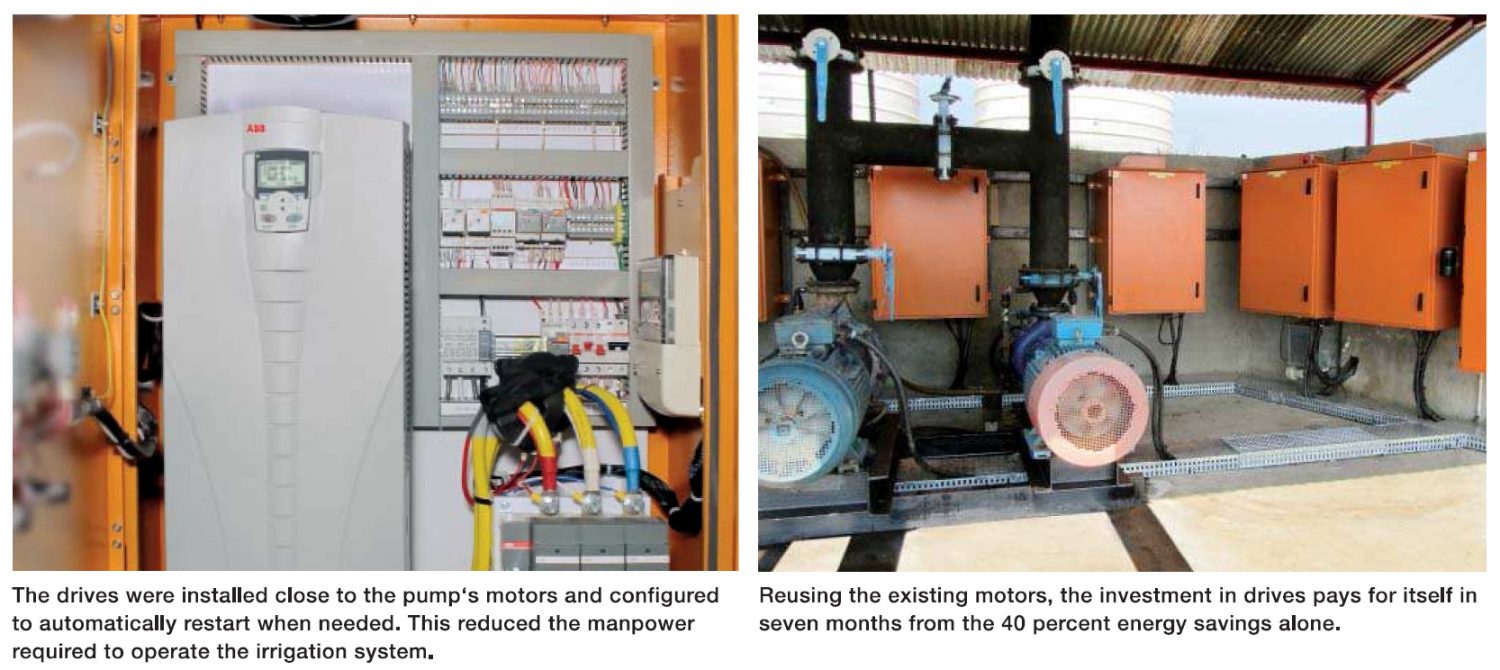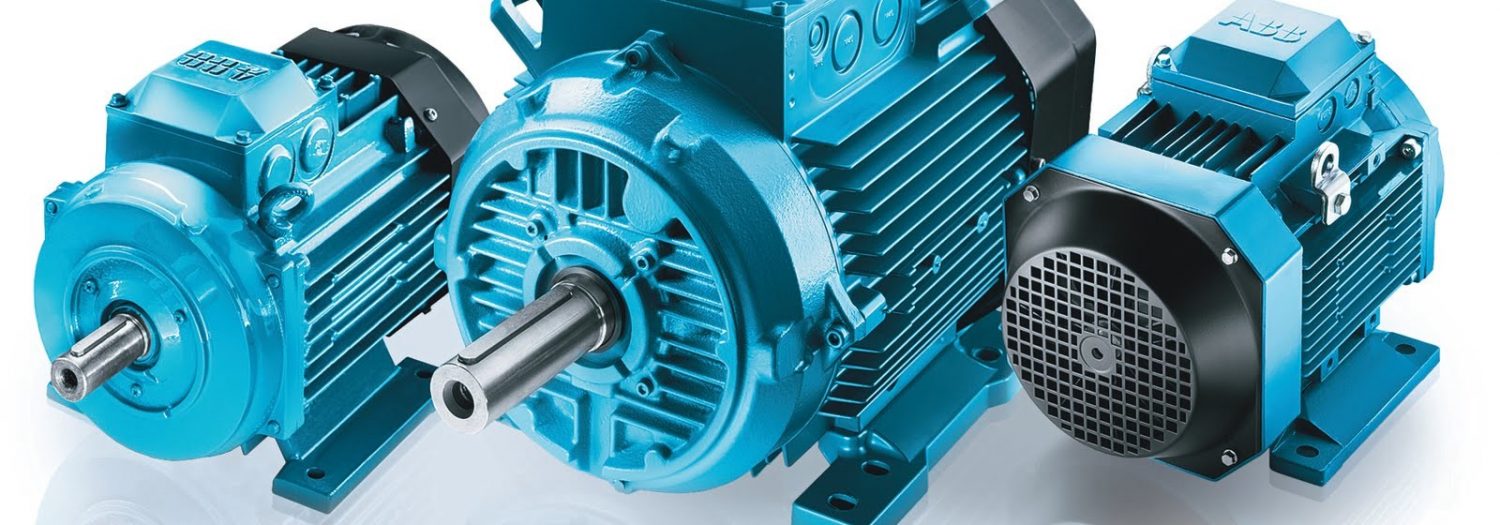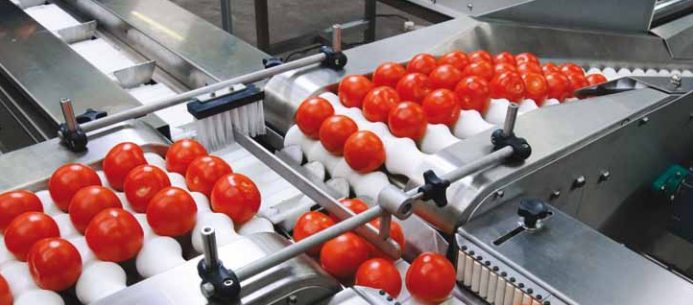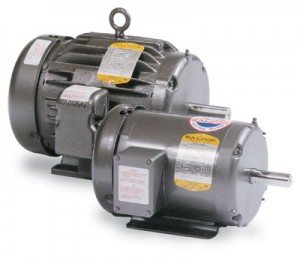
These motors can easily have different start and stop control methods performed by a variable frequency drive.
If you’re not familiar with the motor and drive industry, controlling a motor can be intimidating. Technology offers us many solutions when controlling motors and electronics, but not all of those solutions are equal. There are a number of different ways you can control how a motor starts and stops, and it all begins with a variable frequency drive.
Variable frequency drives give you complete control over your motor. You can control the start method, stop method, speed, direction and much more. They also offer several layers of protection to make sure your motor doesn’t get damaged in the process.
We would like to help you get exactly what you’re looking for. As a distributor of many variable frequency drives through our online store, we’re here to help you find the exact solution you need. In this instance, we will help you start and stop the motor in different ways.
How To Control How A Motor Starts
We begin with our personal favorite, the SMVector Series variable frequency drive. This drive is extremely versatile and cost effective. Once you’ve commissioned the drive, you can easily control how your motor starts and stops. Here’s how you do it:
- Press the menu button.
- If prompted for the password, use the arrow keys to select 0224 and press themenu button again.
- Scroll to parameter P110 and press the menu button again.
- Choose from one of the following start methods:
- 00 – Normal – Drive starts when you press the start button. Start command must be applied at least 2 seconds after power-up; F_UF fault will occur if start command is applied too soon.
- 01 – Start on Power-up – Drive attempts to start as soon as the unit is powered up. For automatic start / restart, the start source must be the terminal strip and the start command must be present.
- 02 – Start with DC Brake – When start command is applied, drive will apply DC braking according to P174 and P175 prior to starting the motor.Start command must be applied at least 2 seconds after power-up;F_UFfault will occur if start command is applied too soon. If P175 = 999.99, DC braking will be applied for 15 s.
- 03 – Auto Restart – Drive will automatically restart after faults, or when power is applied.For automatic start / restart, the start source must be the terminal strip and the start command must be present. Drive will attempt 5 restarts; if all restart attempts fail, drive displays LC (Fault lockout) and requires a manual reset.
- 04 – Auto Restart with DC Brake – Combines Start on Power-up with Start with DC Brake.For automatic start / restart, the start source must be the terminal strip and the start command must be present.If P175 = 999.99, DC braking will be applied for 15 s.Drive will attempt 5 restarts; if all restart attempts fail, drive displaysLC(Fault lockout) and requires a manual reset.
- Once you’ve made a selection, press the menu button.
How To Control How A Motor Stops
Now that you’ve set how you want your SMVector series drive to start, you can select how you want it to react when it is configured to stop. Here’s how you do it:
- Press the menu button
- If prompted for the password, use the arrow keys to select 0224 and press the menu button again.
- Scroll to parameter P111 and press the menu button again.
- Choose from one of the following stop methods:
- 00 – Coast – Drive’s output will shut off immediately upon a stop command, allowing the motor to coast to a stop.
- 01 – Coast with DC Brake – The drive’s output will shut off and then the DC Brake will activate (refer to P174, P175)
- 02 – Ramp – The drive will ramp the motor to a stop according to P105 or P126.
- 03 – Ramp with DC Brake – The drive will ramp the motor to 0 Hz and then the DC Brake will activate (refer to P174, P175)
- Once you’ve made a selection, press the menu button
The Alternative Flying Start / Restart Method
The SMVector series also has the option to perform different types of flying starts and restarts. A “flying” start is a start that occurs while the motor is in motion. If you have an application that requires the motor stop and restart without completely stopping the motor, this option may be for you.Here are some things you need to consider.
Warning! Automatic starting / restarting may cause damage to equipment and / or injury to personnel! Automatic starting / restarting should only be used on equipment that is inaccessible to personnel.
- Press the menu button.
- If prompted for the password, use the arrow keys to select 0224 and press themenu button again.
- Scroll to parameter P110 and press the menu button again.
- Choose from one of the following start methods:
- 05 – Flying Start / Restart – Type 1–Drive will automatically restart after faults or when power is applied. After 3 failed attempts, drive will Auto Restart with DC brake. This option performs a speed search, starting at max frequency (P103). If P110 = 0, a flying start is performed when a start command is applied.For automatic start / restart, the start source must be the terminal strip and the start command must be present.If P175 = 999.99, DC braking will be applied for 15 s.Drive will attempt 5 restarts; if all restart attempts fail, drive displaysLC(Fault lockout) and requires a manual reset. If drive cannot catch the spinning motor, drive will trip into F_rF fault. If drive trips into F_OF fault, try P110 = to 07 or 08.
- 06 – Flying Start / Restart – Type 1–Drive will automatically restart after faults or when power is applied. After 3 failed attempts, drive will Auto Restart with DC brake. This option performs a speed search, starting at the last output frequency prior to faulting or power loss. If P110 = 0, a flying start is performed when a start command is applied.For automatic start / restart, the start source must be the terminal strip and the start command must be present.If P175 = 999.99, DC braking will be applied for 15 s.Drive will attempt 5 restarts; if all restart attempts fail, drive displaysLC(Fault lockout) and requires a manual reset.If drive cannot catch the spinning motor, drive will trip into F_rF fault. If drive trips intoF_OFfault, try P110 = to 07 or 08.
- 07 – Flying Start / Restart – Type 2– For 2-pole motors requiring a flying restart.Drive will automatically restart after faults or when power is applied. After 3 failed attempts, drive will Auto Restart with DC brake. This option performs a speed search, starting at max frequency (P103). Type 2 utilizes P280 and P281 to set Max Current Level and Decel Time for restart.For automatic start / restart, the start source must be the terminal strip and the start command must be present.If P175 = 999.99, DC braking will be applied for 15 s.Drive will attempt 5 restarts; if all restart attempts fail, drive displaysLC(Fault lockout) and requires a manual reset.If drive cannot catch the spinning motor, drive will trip intoF_rFfault.
- 08 – Flying Start / Restart – Type 2– For 2-pole motors requiring a flying restart.Drive will automatically restart after faults or when power is applied. After 3 failed attempts, drive will Auto Restart with DC brake. This option performs a speed search, starting atthe last output frequency prior to faulting or power loss. If P110 = 0, a flying start is performed when a start command is applied.Type 2 utilizes P280 and P281 to set Max Current Level and Decel Time for restart.For automatic start / restart, the start source must be the terminal strip and the start command must be present.If P175 = 999.99, DC braking will be applied for 15 s.Drive will attempt 5 restarts; if all restart attempts fail, drive displaysLC(Fault lockout) and requires a manual reset.If drive cannot catch the spinning motor, drive will trip intoF_rFfault.
- Once you’ve made a selection, press the menu button.
The Best Variable Frequency Drive For The Money
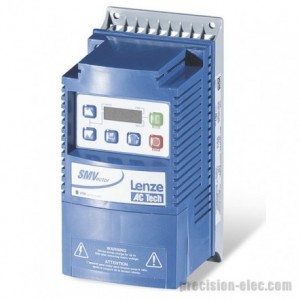
If you want complete control over every aspect of your motor, we recommend the SMVector Series variable frequency drive.
We offer a wide range of variable frequency drives that will fit your needs at our online store. Don’t hesitate to contact us if you have any questions or concerns when looking to purchase a variable frequency drive. We will get you taken care of.
You’ll likely have the most success, and save the most money, by purchasing an SMVector Series variable frequency drive. The SMVector drives areMade In America, include a 2 Year Manufacturer Warranty and the Price Includes Engineering & Application Support.
The performance and flexibility make the SMVector an attractive solution for a broad range of AC Motor applications and with several communications protocols available, networking drives and components into a system solution can be done now or in the future.
The SMVector NEMA 1 (IP31) is the most common and cost effective drive enclosure for a wide range of applications including packaging, material handling / conveying, positive displacement pumping, and HVAC systems.
The SMVector Series can be used with 3-phase AC induction motors and is available in NEMA 1 (IP31) , NEMA 4X (IP65) and NEMA 4X (IP65) with an integral disconnect switch. Filtered input versions of the SMV are available in NEMA 4X (IP65) models for compliance with the CE EMC directive.
Programmable digital and analog I/O allow the drive to be configured for many application specific tasks such as multiple preset speeds, electronic braking and motor jogging to name a few. Like all Lenze AC Tech sub-micro drives, the SMVector uses EPM memory technology for fast and efficient programming.
Technical documentation for the SMVector Series Drive, and all AC Tech brand drives, is available in our Technical Library.

